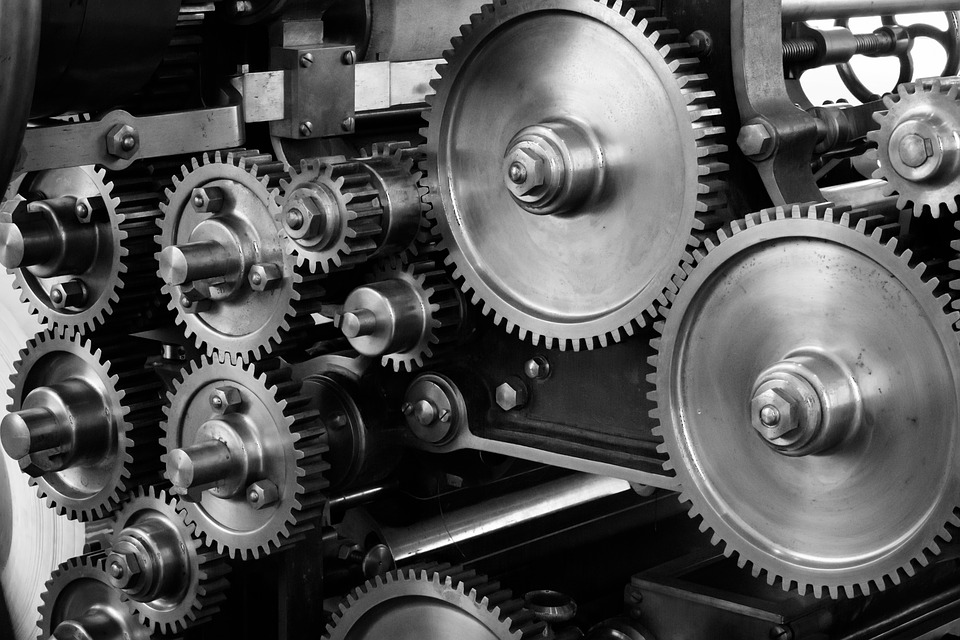An Evolving Society
Based on recent studies, some conclude that the use of hand tools has improved the function of our brains. The evolution that we experienced from the Industrial Revolution is an example. By setting up machines to do our work, we were able to innovate.
The birth of the computer, the use of the Internet, and the reality of wireless now stand as our innovations. These were possible as we, having evolved from using tools, did less manual labor for our own existence. Our minds were able to focus on other things, and this cycle continues while showing us a pattern.
Today’s technology is only possible through what the Industrial Revolution did first.
What Was the Industrial Revolution?
The Industrial Revolution is a period when society first produced on a mass scale. Some historians start this period at 1700, but its biggest influence came from the cotton gin of the 1800s. The massive gin allowed cotton, which was the largest-world industry, to expand via machinery.
Its work laid the foundation for large factories and the machines that would come.
Why the Lathe Had a Special Place
A lathe was the most versatile tool in the Industrial Revolution. This machine uses two stationary ends that secure blocks of metal, slabs of stone, or trunks of wood in place. A rotary engine then spins the material for it to be worked on. This fundamental science was used in Ancient Greek and Crete. It was relied on as a sharpening tool and for carving out pillars. Its central rotary design makes it a “go to” for many machine needs today.
Today it is machinery that is getting the work done. Machines like the Twister LT 2AR are needed and are placed in major factories. The machinery that is placed in factories does more than replace manual labor; machinery does our work in bulk form.
– Mass Production
Industry, by creating large buildings, more jobs and new homes, expanded the “new world.” Europeans had overpopulated Europe, and their immigration into the United States would fuel the American dream. The industrial factories would then fill up fast—with workers.
“Rapid pace” became the norm as cars, shoes, and appliances were made at tremendous speeds.
– Militarization
War also had an impact on how the industry grew and how we would manufacture through machines. Military conflicts not only led to new machinery, but the scale achieved created solutions for daily use.
Introducing the Machine Tool
As it happened, the industrial revolution was possible through the use of metal. Machine tools were pivotal because they could reshape blocks of metal on demand. These tools were required to pry, bend and shape.
You’ll now find machine tools in many manufacturing facilities. They are the basic building blocks of an industry. Consider what a mechanic achieves as he customizes a car; this is what machine tools do for industry. Such tools need restraints in most cases. The metal they work has to be stationary and held in a single place. Each machine can then grind, mill, press, and scrape as needed.
The Central Machines to Consider
Here’s an overview of the most common machine tools used in factories worldwide.
– Grinders: This machine rotates and uses a wheel that’s finished with a rough texture, which can scrape down the face of metals. Depending on the metal used, a grinder can polish its surface or sharpen its blade.
– Broaches: This tool has a “toothed insert” that motions and works on a linear plane. It’s used for precision angles when removing metal.
– Millers: A milling machine creates deep grooves as metal passes under its blades. Different-milling inserts create different cuts and patterns.
– Planers: Planers have the ability to both cut and compress. By compressing metal, planers can create smooth grooves into a hard surface.
– Saws: Machining saws use a metal band that rotates at rapid speeds. They’re effective for cutting through blocks of stone or metal. Each cut is precise and leaves a smooth finish behind.



